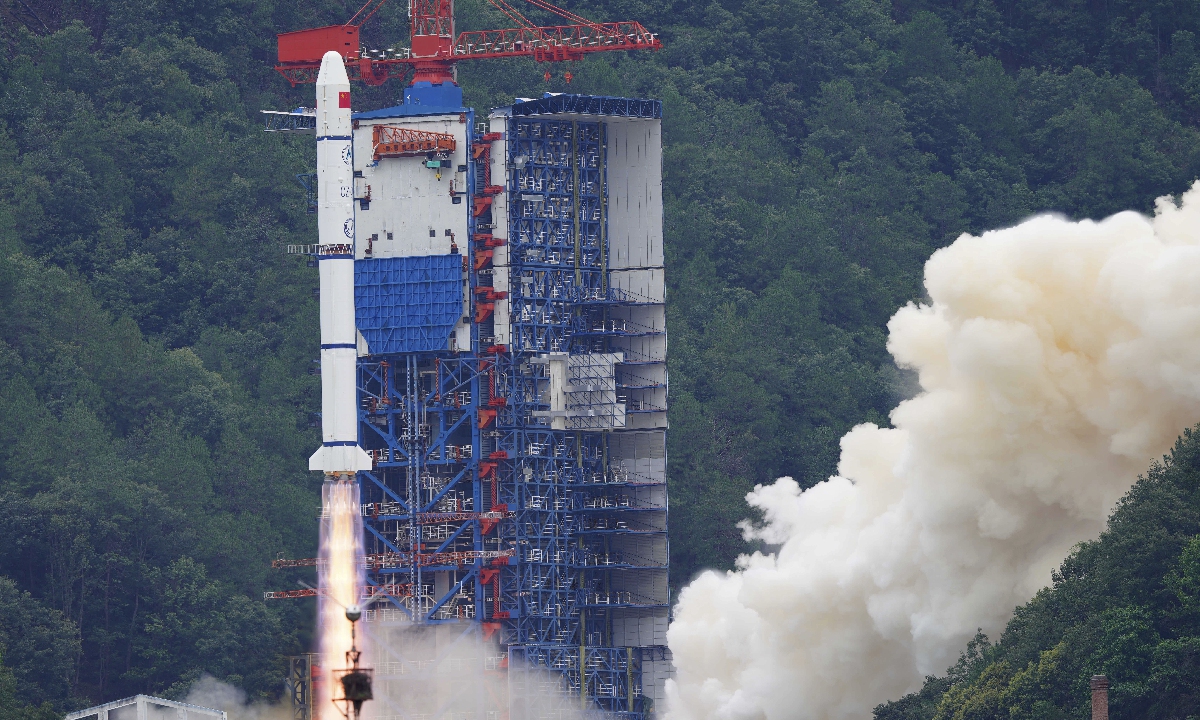ARTS / CULTURE & LEISURE
China-France astronomical satellite detects three GRBs

Photo: VCG
The Sino-French astronomical satellite called Space Variable Objects Monitor (SVOM) has reportedly detected three gamma-ray bursts (GRBs) on Monday. The coordinates of these GRBs have already been submitted to the General Coordinates Network (GCN), according to the China News Service.
According to the project team of the Chinese Academy of Sciences (CAS) involved in the SVOM mission, after the satellite was launched on June 22, its gamma-ray detector was officially put into operation on June 24. Subsequent activation of the detector's high voltage systems during on-orbit testing on June 27 allowed it to capture its first gamma-ray burst that same day, marking the satellite's initial scientific achievement in orbit.
The results of testing showed that there was a high consistency in the GRB's light curve in comparison with observations from China's GECAM-C space telescope and the Fermi gamma-ray space telescope.
Following this success, the gamma-ray monitor detected two more GRBs, on June 29 and July 2 respectively, confirming SVOM's precise capability in detecting GRBs, which is crucial for addressing fundamental scientific questions. Currently, the initial detection results of these three GRBs have been submitted to GCN, and the satellite has completed power-on tests.
As a significant example of international collaboration between China and France in the field of space science, SVOM is the world's most capable satellite for comprehensive multi-band observations of GRBs to date. It was developed under the leadership of the Innovation Academy for Microsatellites of the Chinese Academy of Sciences and integrates four payloads jointly developed by China and France, covering observation bands from high-energy to near-infrared wavelengths.
GRBs are intense flashes of gamma rays from a particular direction in space, marking some of the most violent cosmic explosions since the Big Bang. The study of these bursts will help answer major scientific questions including the origin and evolution of the universe.
In the next phase, SVOM will proceed with payload calibration and operational testing as per the on-orbit testing plan and procedures. Scientific mission observations are expected to commence in August, further contributing to ongoing exploration and scientific research in space astronomy, particularly in GRB detection.



